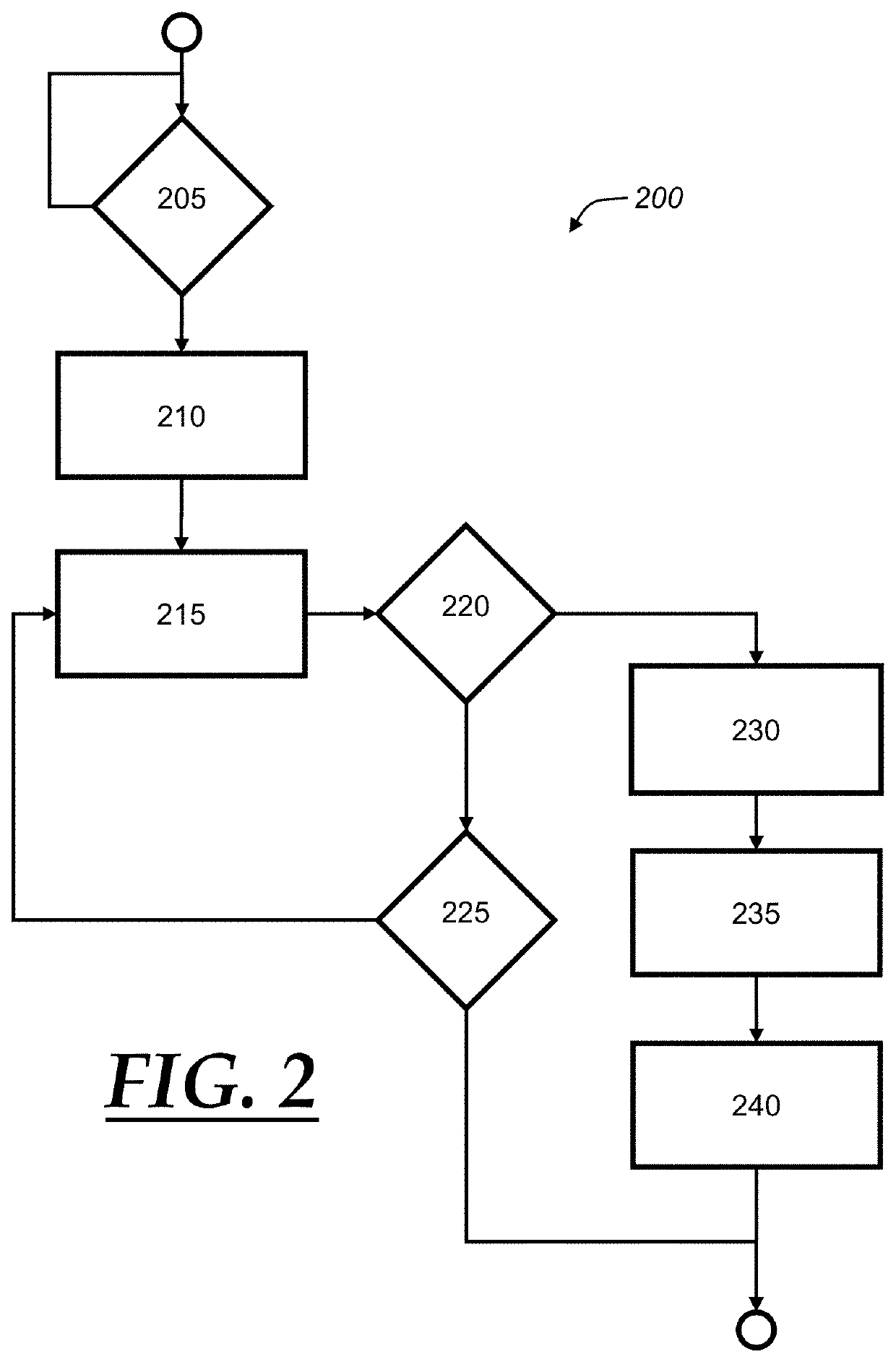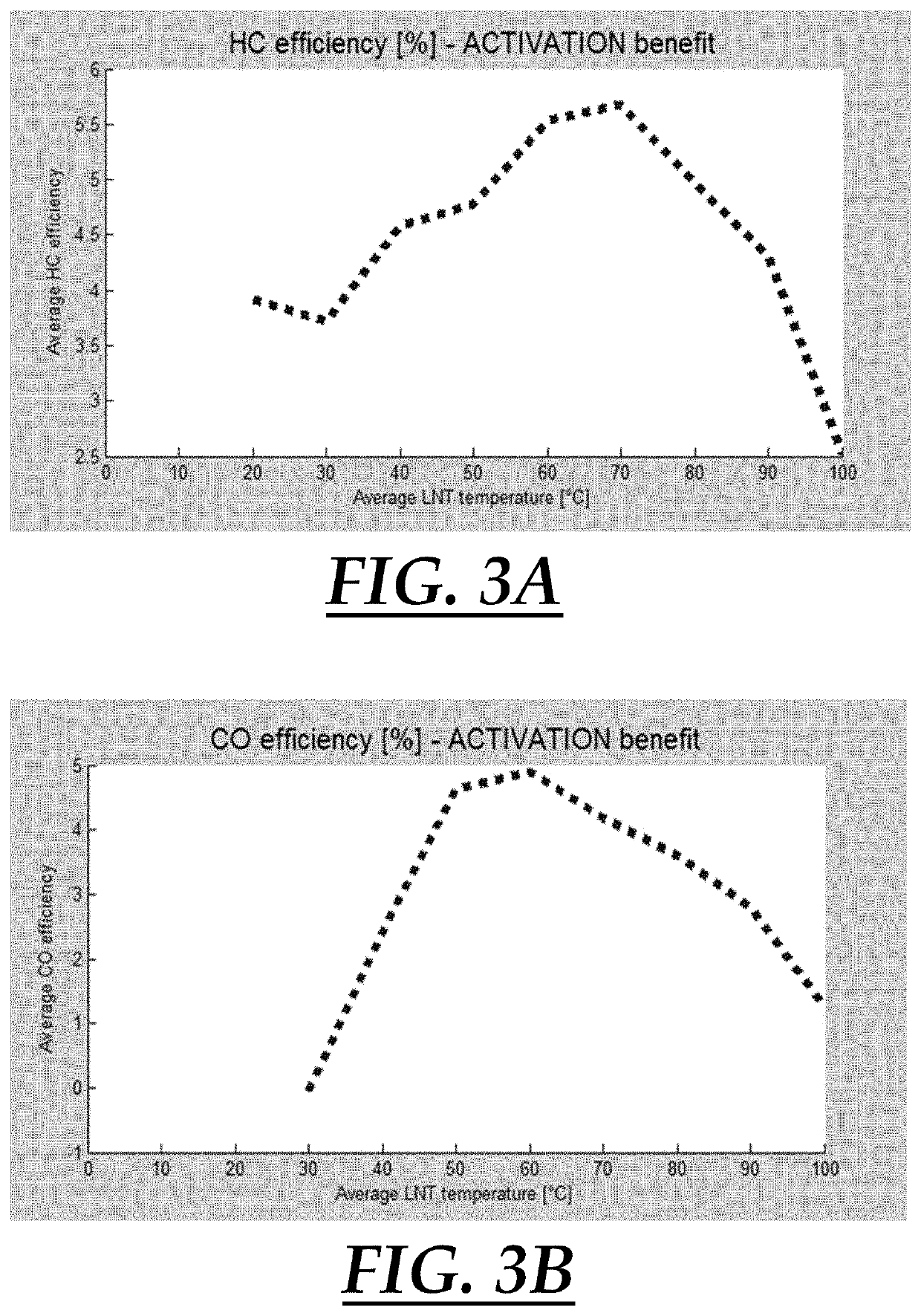Reactivation of catalyst for lean NOx trap
- Summary
- Abstract
- Description
- Claims
- Application Information
AI Technical Summary
Benefits of technology
Problems solved by technology
Method used
Image
Examples
Embodiment Construction
[0023]Example methods and systems described herein may generally detect a deactivation of a catalytic converter. As will be discussed further below, a deactivation of a catalytic converter may occur during a lean-burn engine operation while the catalytic converter is exposed to relatively high temperatures. Deactivation may thus be detected monitoring catalyst temperature and exposure time at that temperature. Additionally, a deactivation level may be determined, which may be used to identify corrective measures to reactivate the catalyst. A deactivation level or extent to which the catalyst has been deactivated may be determined from an exhaust or catalytic converter temperature, an exposure time at the elevated temperature, and also a space velocity or flow rate associated with the exhaust through the catalytic converter. Example reactivation strategies may include a temporary period of an enriched air-fuel ratio, which may include one or more intermittent “pulses” of an enriched ...
PUM
 Login to View More
Login to View More Abstract
Description
Claims
Application Information
 Login to View More
Login to View More - R&D
- Intellectual Property
- Life Sciences
- Materials
- Tech Scout
- Unparalleled Data Quality
- Higher Quality Content
- 60% Fewer Hallucinations
Browse by: Latest US Patents, China's latest patents, Technical Efficacy Thesaurus, Application Domain, Technology Topic, Popular Technical Reports.
© 2025 PatSnap. All rights reserved.Legal|Privacy policy|Modern Slavery Act Transparency Statement|Sitemap|About US| Contact US: help@patsnap.com



